As a millennial, I’ve been told my generation loves the idea of a car that uses electricity. It’s supposed to take me to fancy coffee shops where I can complain about gluten and await handouts, right?
Tesla, despite all its ongoing drama, has moved the idea of an electric daily driver into the mainstream. And there is zero question that electric motors will play some part in classic cars in the future. Electric conversions of vintage cars, though lambasted by some, are out driving streets right now.
The idea of combining electric power with gas engines has been something automakers have been working on for years, and at which they are getting quite good. Mileage on electric charges is increasing and prices are falling.
But automakers still have a massive hurdle to jump over when it comes to these hybrids, whether they plug into the wall or not: most are simply not exciting to drive. The 2018 Honda Clarity is another plug-in hybrid that leaves something to be desired.
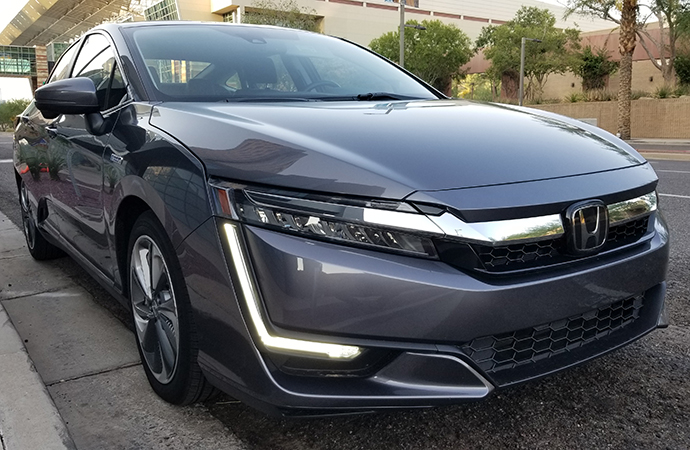
Don’t get me wrong: I wasn’t expecting Ferrari-like performance. I wasn’t even expecting Civic Type R performance. The Clarity delivered on gas mileage and ride comfort, but that was about it.
The Clarity is incredibly efficient, a remarkable task given the car’s chunky curb weight on the wrong side of 4,000 pounds. I drove it for hundreds of miles and — thanks to having some time to fully charge the battery — I spent a whopping $9.25 on gas for an entire week.
Despite my slight disdain for the car, I couldn’t help but smile as I topped off the tiny seven-gallon gas tank. I should have timed myself, as I was outside in the summer heat for maybe three minutes total before driving away from the pump.
That gas mileage is courtesy of its 17-kWh battery pack that allows for about 50 miles of electric-only driving. That distance can be affected by a number of factors, including running the climate-control system.
I was able to make my 40-mile roundtrip commute with the A/C blasting and radio on, but by the time I got home, the battery was pretty much drained, which meant it was time for a charge.
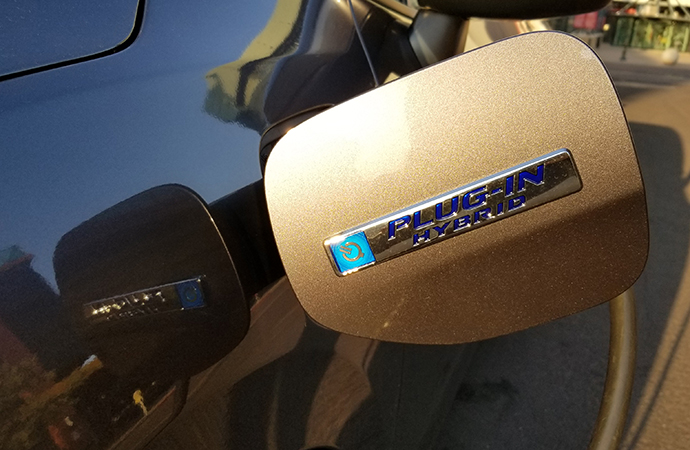
There are two ways to charge the Honda Clarity: A 240-volt Level 2 station that you can either find around town or install at your home, or from a standard 110-volt electrical socket.
The latter option is referred to as Level 1 charging and Honda provides a cord in the Clarity’s trunk for such purposes. While it doesn’t require any installation, it will take time. The estimated time to charge the Clarity’s empty batteries on a standard outlet is a whopping 19 hours; longer than its competitors, but the Honda’s battery range outdoes others as well.
For those on energy savings plans like mine, where power is more expensive at certain times, you can schedule charging times through the automaker’s HondaLink app so you don’t have to remember to plug the car in at a specific time every night.
Clarity owners need not worry about running out of juice. The car’s 1.5-liter gasoline engine can be used in consort with the electric motor or on its own when the batteries are drained. But be forewarned: The usually near-silent Clarity makes quite the racket when the pedal is pushed to the floor while the gas engine is engaged.
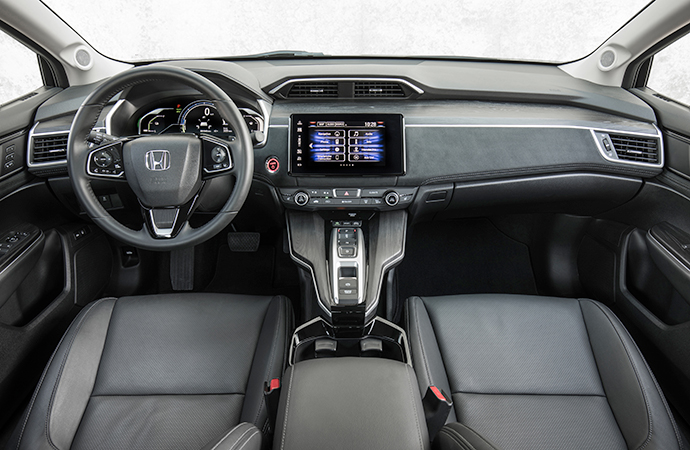
The interior of the Clarity is comfortable. There’s plenty of seat and legroom and everyone I took for a ride seemed to enjoy it, which didn’t surprise me. They all noticed the large tablet-like interface in the center of the dash that essentially controls everything in the car.
I found the car’s systems relatively simple to use, but was dismayed at what felt like very cheap plastic parts on the steering wheel controls. It’s a very minor issue, but it felt like Honda put some refined touches in the Touring trim and forgot about the wheel.
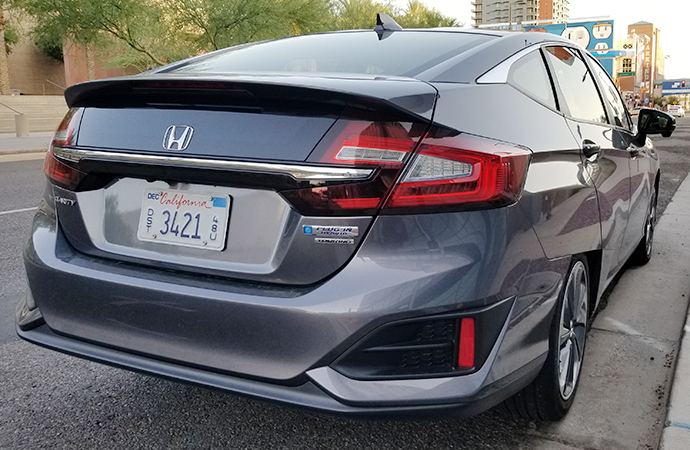
As expected in a plug-in hybrid, the Clarity is loaded with technology. The one I drove was equipped with a whole host of devices and systems, including a blind-spot camera that displayed on the dash screen when the turn signal was engaged. It was handy, but the camera overrode everything, including voice-recognition software.
The safety systems in the Clarity certainly will help prevent collisions, given their sensitivity to driving situations. The adaptive cruise control favors firm braking and the lane-keeping assist pushed on the wheel with more frequency than I’d like. Who knows? Maybe I’m just a lousy driver.
Where this Honda would really excel is cross-country touring. Those looking for great gas mileage and a smooth ride will likely think highly of their purchase. But those of us — millennials included — who want a top driving experience paired with those advantages will likely have to wait until the cars evolve more.

2018 Honda Clarity Plug-In Hybrid
Vehicle type: Five-passenger, four-door sedan, front-wheel drive
Base price: $33,400 Price as tested: $37,490
Engine: 1.5-liter paired with 17kWh battery, 181 horsepower at 5,000; total horsepower 212, 232 pound-feet of torque from zero through 2,000 rpm. Transmission: Fixed single-speed
Wheelbase: 108.3 inches Overall length/width: 192.7 inches/73.9 inches
Curb weight: 4,059 pounds
EPA mileage estimates: 44 city/40 highway/52 combined
Final assembly: Sayama, Saitama, Japan



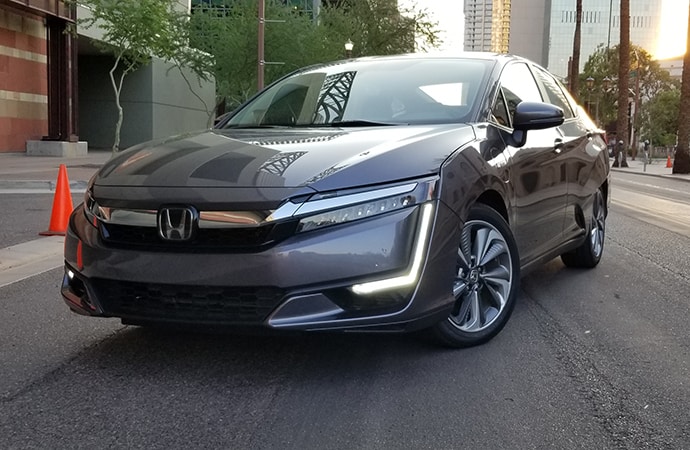


"But those of us — millennials included — who want a top driving experience paired with those advantages will likely have to wait until the cars evolve more."
My response: Not me because I am a TRUE millennial who will one day will buy the Honda Clarity because i is the car that can do EVERYTHING I want and it will evolve the most all the way to the year 3000!
Too bad the title highlights mediocre driving experience but the writer barely spends time describing it. As an owner of this car for 8 months I can’t disagree more with the driving experience comment. In EV mode (and especially in Sport mode) this car is amazing responsive as all EVs tend to be. Its handling around corners is also remarkable for a 4,000 lb car. And as millennials have a long life ahead of them, a 4000 lb car is a lot safer on the road then smaller EV or PHEV cars
This may be the future but I’m not impressed. Acar that requires 19 hours to recharge on 110v is not an asset.
How will all the apartment dwelling, street parking millennials recharge this thing?
Electric vehicles will need a solid infrastructure to succeed. There needs to be a network of recharging stations and faster recharge times.